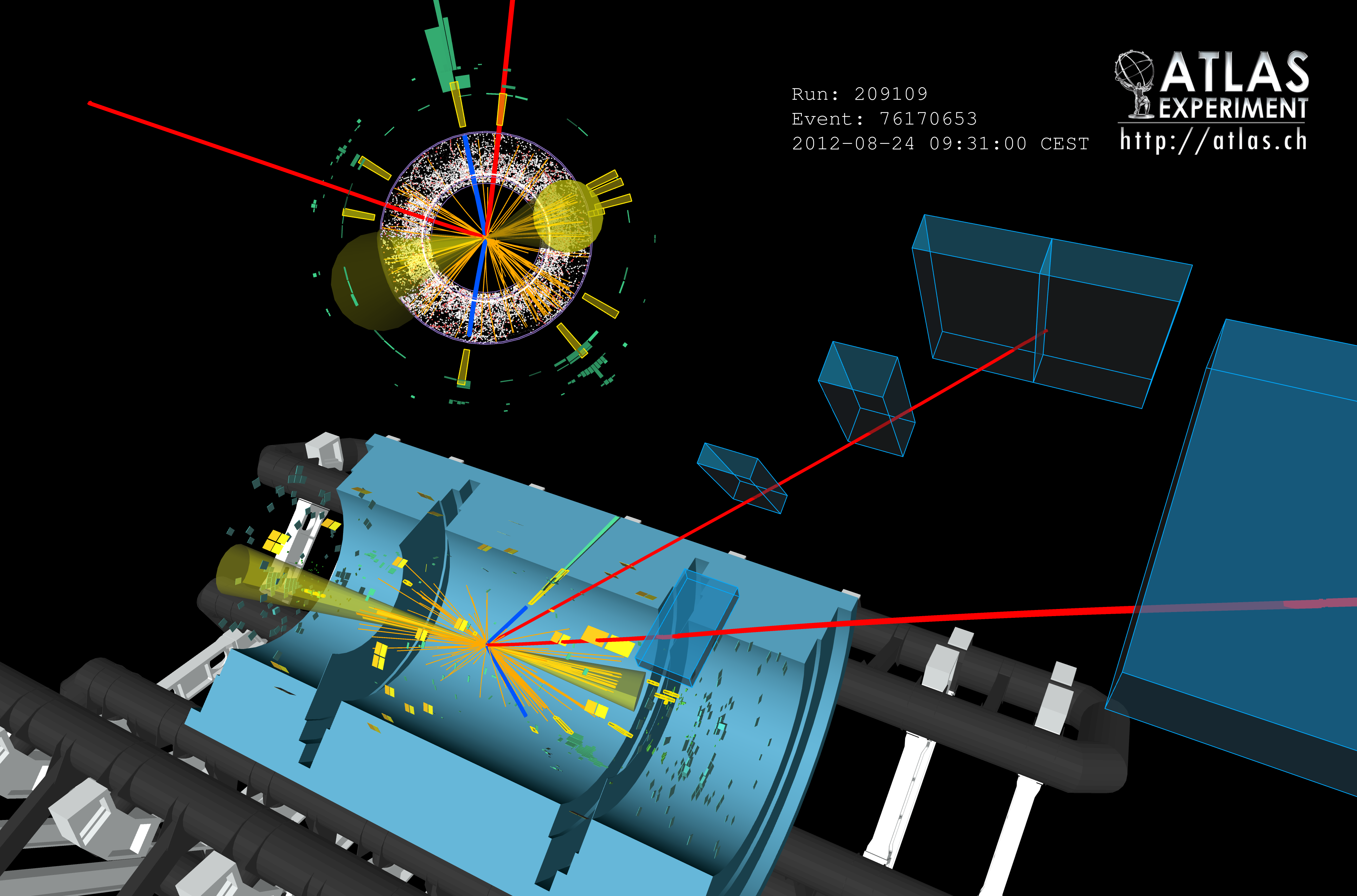Higgs boson production measurements from the channels of discovery
10 September 2014 | By

The discovery of the Higgs boson by the ATLAS and CMS collaborations in 2012 marked a new era in particle physics because it completed the Standard Model and gave us another tool to explore territories beyond. The Standard Model predicts precisely the interactions of the Higgs boson to all other elementary particles once its mass is measured.
On the other hand, there are alternative theories that predict deviations from Standard Model expectations. For example, short-ranged (“virtual”) production of a new, heavy particle during the Higgs boson production or decay would not change the actual picture of the event in the detector, but could modify the rates in which certain events occur. Therefore, to determine the precise nature of the discovered boson, it is crucial to measure its mass and to study its production and decays in as many final states as possible.
ATLAS has new measurements of the Higgs boson properties in two high resolution decay channels – in two photons and to four charged leptons using all the proton-proton collision data delivered by the Large Hadron Collider and collected by the ATLAS detector in 2011 and 2012, with an improved knowledge of the detector’s performance. These channels have previously been used to measure the mass, as 125.36 ± 0.41 GeV, as presented in a previous brief.
Knowing the mass allows accurate predictions of the number of Higgs bosons decaying in each channel. The number of observed events divided by the number of expected events is called the signal strength or mu (μ). The closer the value of μ is to one, the more consistent is the observation to the Standard Model. The signal strength in the two photon channel is found to be μ=1.17±0.27. In the four leptons channel, μ=1.44 +0.40 -0.33. Within their uncertainties, both results are in agreement with the Standard Model.
The Standard Model also predicts that a Higgs boson can be produced through different mechanisms in proton-proton collisions. The most frequent mechanism (87%) is the scattering (or “fusion”) of strongly interacting gluons to a Higgs boson. Production through the fusion of W or Z bosons is predicted to occur in 7% of the cases, and has a characteristic event signature of two jets in the forward direction (along the proton beams) that accompany the Higgs boson. The display of a candidate event for such a production is shown in the figure below. In their recent papers [1,2] ATLAS physicists have identified and measured Higgs bosons from various production mechanisms.
So far, no surprises emerge when looking into the details of the Higgs boson production, but the statistical uncertainties are still large. The new data taking campaign starting in 2015 will be very important to decrease the uncertainties on the measured signal strengths and will improve our understanding of the nature of the Higgs boson.
Links
- Measurements of Higgs boson production and couplings in the four-lepton channel in pp collisions at center-of-mass energies of 7 and 8 TeV with the ATLAS detector (Phys. Rev. D 91 (2015) 012006, arXiv: 1408.5191, see figures)


